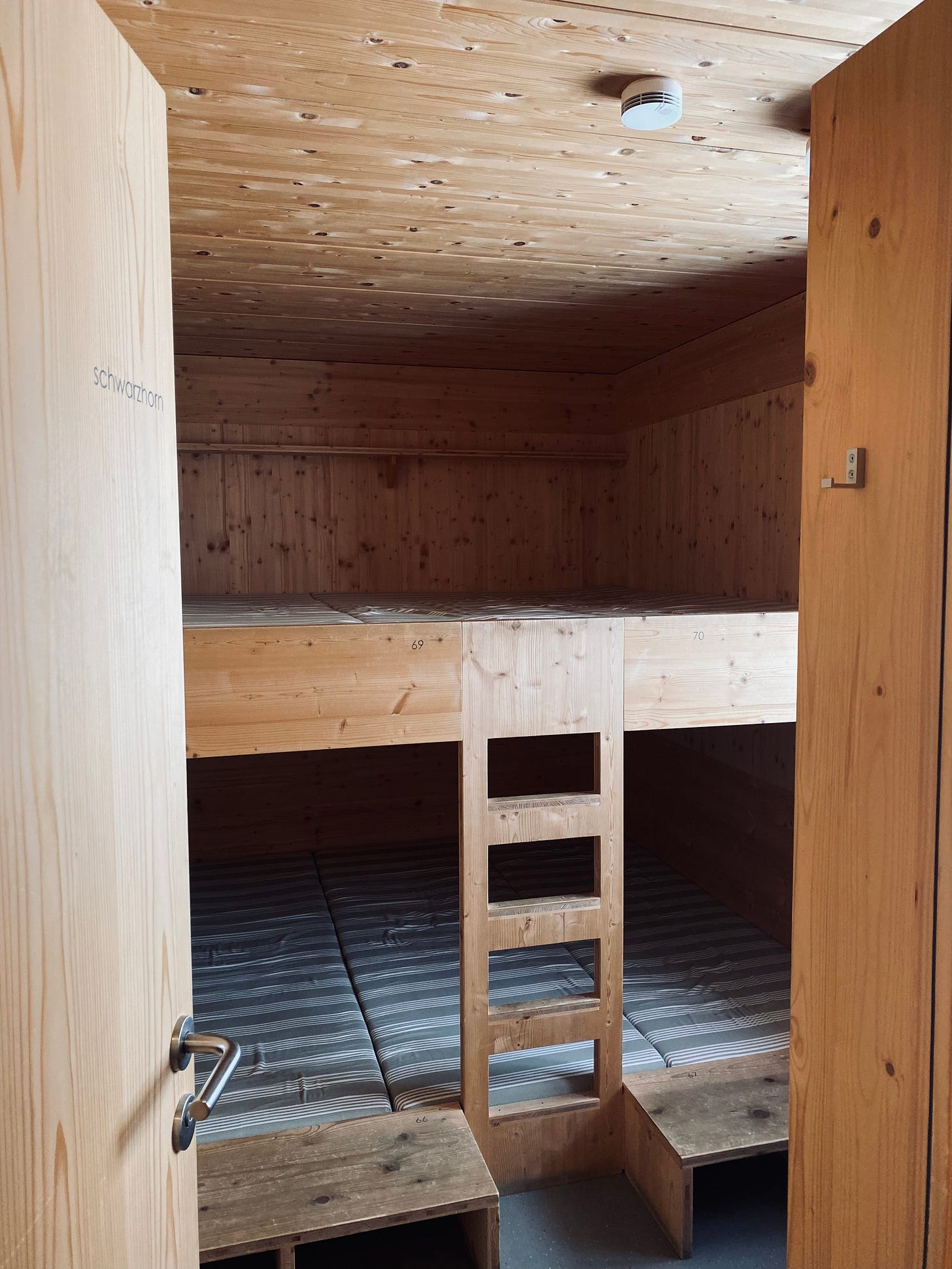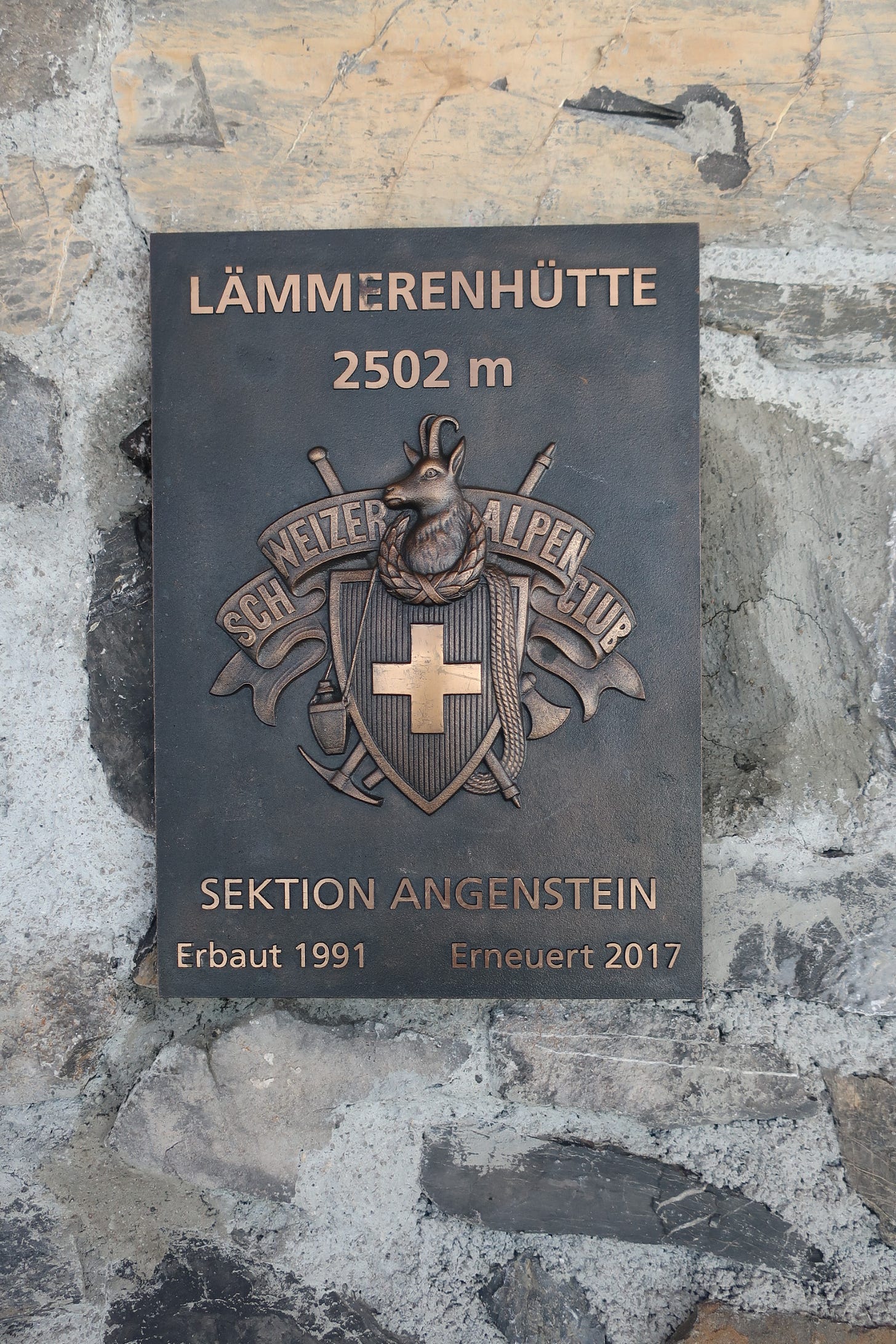In mountain huts, lives collide; they are places where only the present exists; there is no discussion of what a person does or has, only how they have travelled and what led them to this moment. There is no aimless scrolling, only information and multi-lingual conversation. There are no real luxuries, but with awe-inspiring views and only stars as neighbours, there is space to dream.
It is a special feeling to round a corner and see a mountain hut, especially when the challenge of getting there feels like you are living precariously on the edge. This was how I felt a few weeks ago when I travelled to Leukerbad to ski tour the wild mountains of the Wildstrubel. Whilst I have ski toured before, Covid and other things have meant it's been a while, and my uphill skills are decidedly rusty. So when we climbed out of the Gammi pass, I was both excited and relieved to see the beautiful wooden structure of the Lammerenhutte, within touching distance, perfectly placed on a vast plateau. Surviving the challenge of the ascent felt good. Still, the feeling of throwing my rucksack down and toasting my survival with a litre of lukewarm tea provided perfect contentment.
Later that day, on the hut keeper's advice, I went outside to watch for bearded vultures. With a wing span of over 2.6 m, this is the largest bird in the Alps; it seemed fitting that such a majestic bird should live in such a sublime place. Currently, two adults and a juvenile are using the caves of the pass. Whilst I sat at 2502m, scouring the crescent of silvery limestone cliffs, I saw that the evening light had lit the crevices of ice within the rock strata, and below frozen waterfalls fell away to the pass, the rock shimmered, creating an ethereal kind of light that I had never seen before. The vulture did not reveal itself, but the alpine choughs gathered around the hut's chimney as if warming themselves on the woodsmoke that hung in the air. Then, a rustling noise came from behind me, and I turned to see the most beautiful Alpine fox; momentarily, she met my gaze. Then, as quickly as she arrived, she was gone. But in those few moments, my world paused, and life seemed a little more wild.
The Lammerenhutte hut is one of 153 huts that can house 9000 people that make up the Swiss Alpine Club (SAC). All the places are different. Some are simple shelters, but most provide simple self-catering accommodation; each has its own character and epic view.
What to expect in a mountain hut;
• Shoes and boots are not allowed in the hut; hut slippers/ crocks will be provided
• Kit to bring – Head torch, sleeping bag liner, ear plug, wet wipes, cash, warm jacket
• Ice axes or anything sharp must be left in the hall in a basket
• In catered huts, a three-course meal will be provided; it will likely include cheese and pasta and often angel delight (What's not to like?!)
• You eat on long tables and share experiences
• Rooms are usually dormitories of 6 people upwards.
• Beds are usually not more than 60cm wide.
• Huts work hard to be sustainable, so there is rarely hot water and sometimes no running water
• Alcohol is available but often has to be helicoptered up, so it may be more expensive than in the valley.
• Don't be daunted by this list… be brave… you won't regret it.
Those who climb among the summits of the peaks of the Alps in summer or winter are rewarded not just by the vista and nature but by the unique experience that huts offer. Huts can seem daunting, but they are places of inclusivity; you do not have to be able to ski tour, you can visit on foot in summer, and children are very welcome. They are places to have adventures, where conversations are started and experiences shared; they are places to feel the wildness and to make lasting memories. In a world that sometimes feels a little too crazy, huts are authentic places that offer a sense of fullness and quiet contentment.








Lovely words and a magical picture Bel, felt like I shared the experience with you. Thank you, Terry